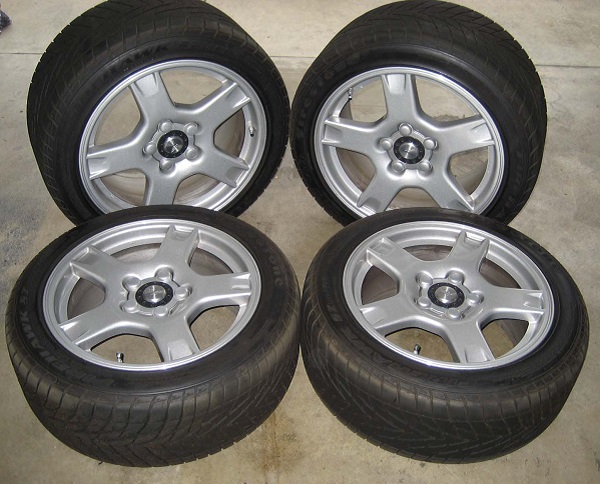Tech Thursday: C5 Tires and Wheels
Tires and Wheels
Why Mod?
Replacing the tires and wheels on a stock Corvette immediately makes your Corvette stand out. It is probably the easiest way to modify the appearance without extensive fiberglass work and without the risk of ruining your car. If you don’t like the rims you can always put the stock ones back on and sell your aftermarket rims. Additionally, if you’re careful about which wheels you select you may also decrease the unsprung weight of your car which will help your car’s handling.
Increasing rim size can help make turn-in a bit quicker and handling even sharper (because there is less sidewall flex). While most people change their car’s rims simply for aesthetic you can also improve performance. Similarly, by getting wider tires (and wheels) you increase the size of the tires contact patch and thus increase your grip.
What are the negatives? Well, an increase in tire width will increase rolling resistance (meaning increased fuel consumption). Increasing wheel diameter (going +1″ or +2″) will give you a harsher ride (and you might crack a rim over a pot-hole) because there is less sidewall to flex. And if the rims are heavier than the OEM rims your braking and handling will suffer due to greater unsprung weight.
If you’re thinking of swapping your wheels and want some inspiration, check out this gallery
One thing to note however is that the C5 had a Tire Pressure Management System (TPMS) which may, from time to time, need to be reset or replaced. Following is one way to do it:
Step 1: Turn on ignition. Press the “Reset” button located at the bottom of the Driver’s Information Center (DIC) controls on the right side of the instrument cluster to clear any warning messages.
Step 2: Press and release the “Options” button and scroll through the display options until the IPC display is blank.
Step 3: Press and hold down the “Reset” button for three seconds. Press the “Options” button again until the “Tire Training” appears on the IPC display.
Step 4: Press the “Reset” button until “Learn L Front Tire” appears on the display. You are now ready to begin programming the sensors.
Step 5: Place a large magnet over the left front tire valve stem. A specific Tire Pressure Monitor System Programming Tool is available from GM but a large magnet does the same thing. The horn will sound when the sensor has been programmed. Remove magnet from the valve stem and repeat this process if it takes more than 15 seconds to activate. You have three tries to perform this step before you need to start over.
Step 6: Repeat the process as indicated on the IPC display after the first sensor has been programmed. Cancel the programming at any time by turning off the ignition and waiting 2 minutes before continuing. Turn off engine once programming has been completed.
Step 7: Test the sensors by driving the car at greater than 15 miles per hour and depressing the “Gauges” button on the DIC control panel. The current tire air pressure will be indicated on the IDC display.

